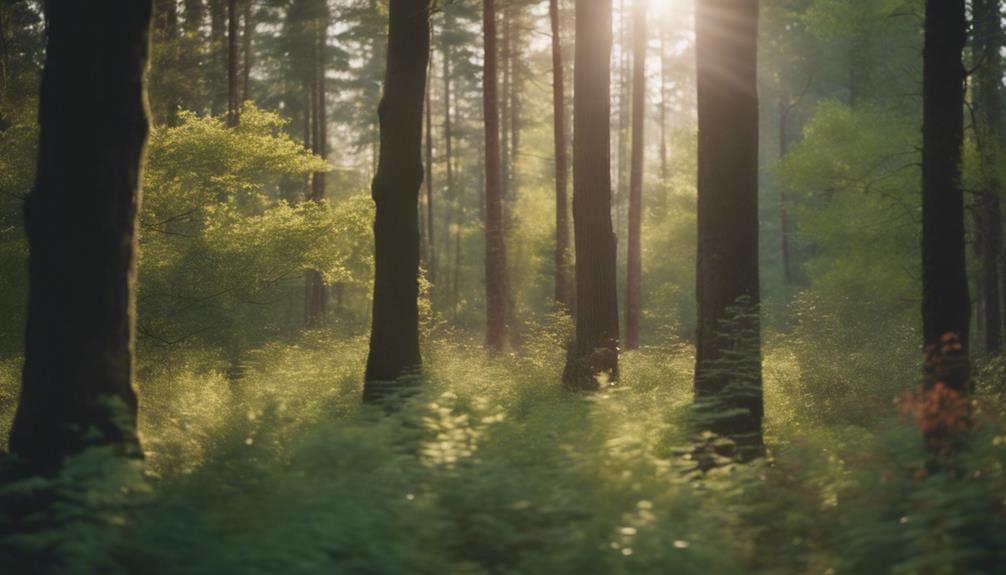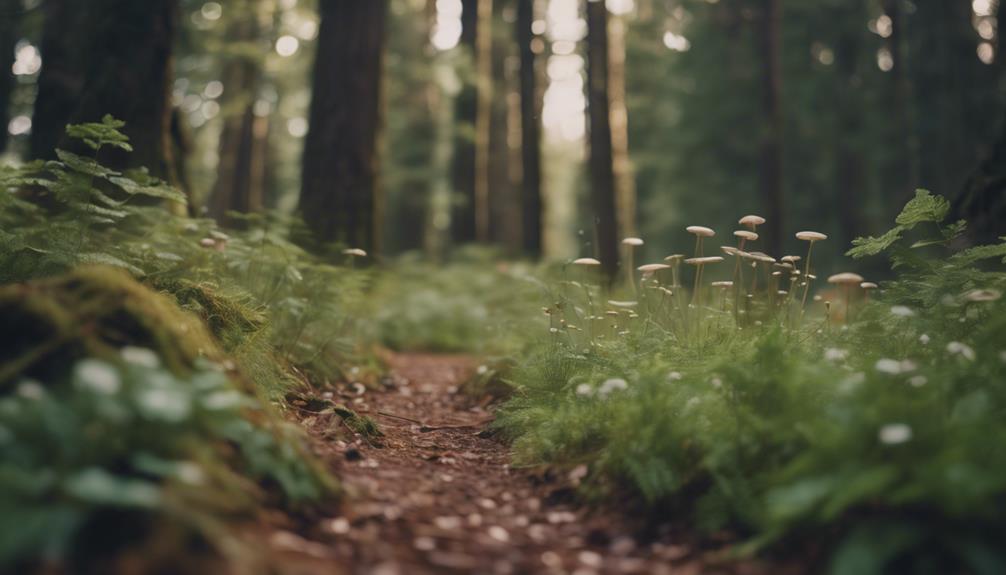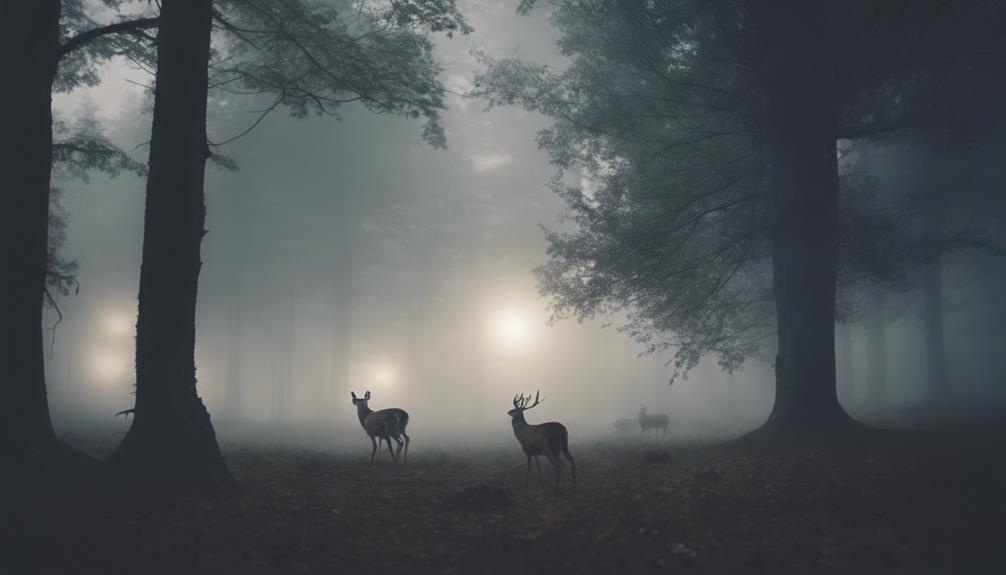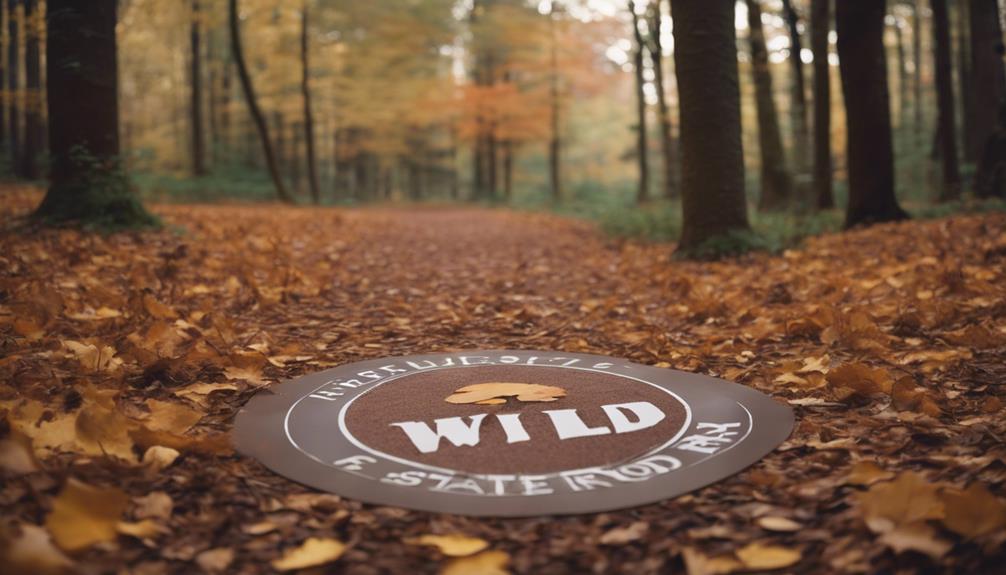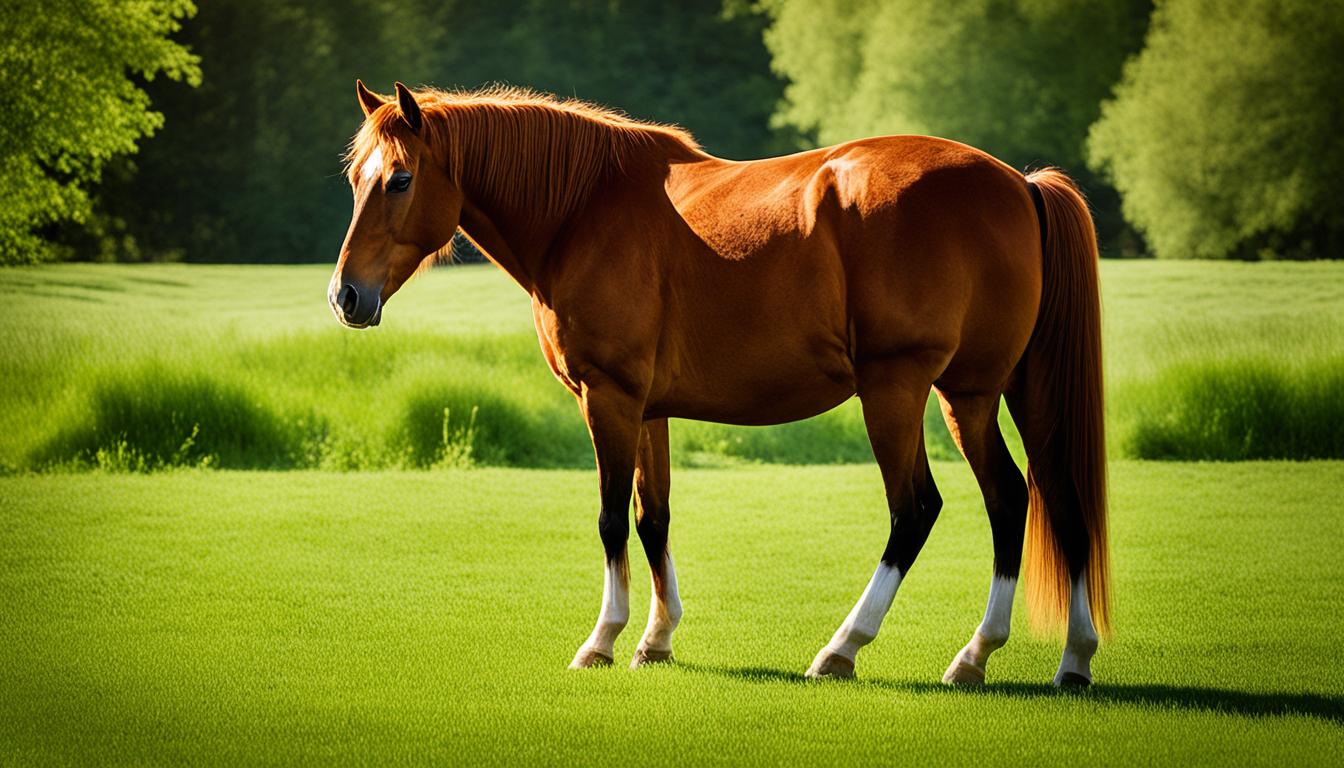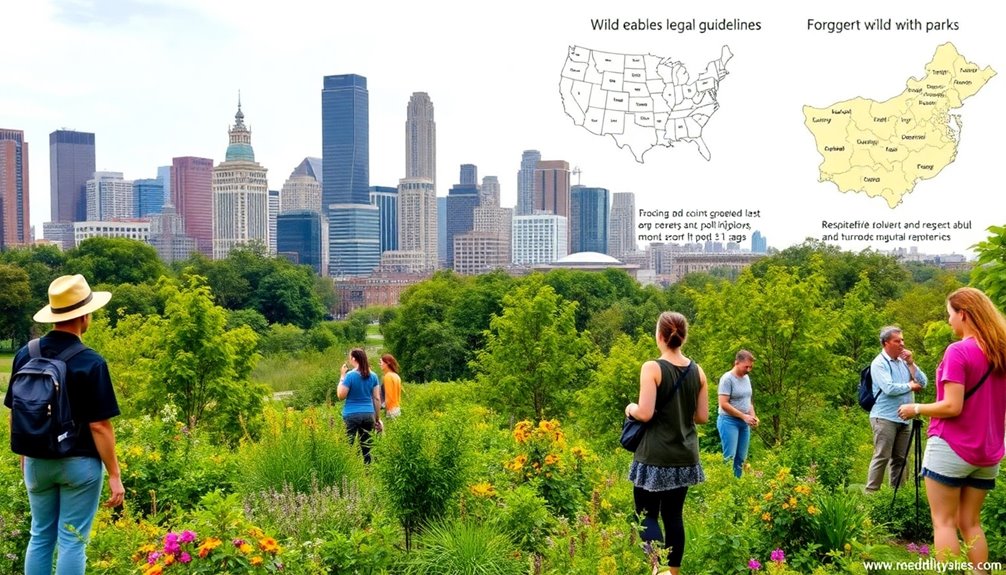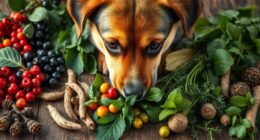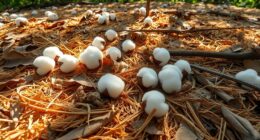You can forage in national forests, but understanding the rules and regulations is essential. The USDA Forest Service issues over 10,000 permits annually for responsible foraging practices. You'll need to obtain a permit, which type depends on your collection needs. Costs vary, with some permits being free or low-cost. Forest Service rules and restrictions aim to balance resource utilization with conservation efforts. To forage responsibly, you'll need to comprehend environmental protection and sustainability, regional variations, and private land vs public land foraging. By following the rules, you'll avoid penalties and contribute to preserving natural wonders – and there's more to discover about foraging in national forests.
Key Takeaways
- In the US, permits are often required to forage in National Forests, depending on the type and quantity of materials to be collected.
- The type of permit needed depends on the specific forest, region, and purpose of foraging, with options including Free Use Permits and Commercial Permits.
- Forest Service rules and regulations vary by region, and it's essential to check with local authorities for specific requirements and restrictions.
- Unauthorized foraging in National Forests can result in fines starting at $500, so it's crucial to obtain the necessary permits and follow sustainable foraging practices.
- National Forests offer vast areas for legal foraging, with some allowing up to 5 gallons of mushrooms without a permit, but regulations must be followed to preserve the ecosystem.
Understanding Permits and Regulations
Before you start foraging in National Forests, you'll need to understand the permits and regulations that govern this activity. Foraging in National Forests can be a rewarding experience, but it's crucial to do it responsibly and legally.
To guarantee the protection of resources and collectors, you'll need to obtain a permit from the USDA Forest Service District Offices. The type of permit you need will depend on your collection needs, and you may need approval from Forest Service personnel.
Types of Permits and Costs

As you prepare to forage in National Forests, you'll need to understand the types of permits available to you. Some forests may require that you obtain a free-use permit for personal foraging, while others may charge a fee depending on the quantity and types of materials collected. Be sure to check local regulations for specific guidelines, as rules can vary from one forest to another. Whether you’re foraging in Epping Forest or a National Forest, respecting the environment and adhering to permit requirements helps ensure sustainable use of natural resources.
There are two main types: Free Use Permits, which are typically granted for personal use, and Commercial Permits, which allow you to sell or exchange the materials you've collected.
You'll want to familiarize yourself with the specific requirements and costs associated with each permit type to make sure you're in compliance with regulations.
Free Use Permits
To guarantee the proper management and conservation of forest resources, it's crucial to check with the local authorities for specific requirements. Free use permits are important for foraging in national forests when the supply of forest products is abundant, but not for commercial purposes. This type of permit is perfect for personal use, such as botanical collection or research, as long as you're not planning to sell or exchange the harvested materials.
The good news is that these permits are usually free or low-cost, with a minimum charge of around $20. However, higher fees might apply to offset processing costs. The Forest Service personnel will determine if a permit is required based on your collection needs and resource protection.
Foraging regulations vary by forest and region, so it's crucial to check with the local authorities for specific requirements. Free use permits guarantee the proper management and conservation of forest resources. Remember, these permits are for personal use only, so if you're planning to sell or trade your harvested materials, you'll need to explore other permit options.
Always follow the rules and regulations to ensure the sustainability of our national forests.
Commercial Permits
When you plan to commercially harvest forest products, you'll need to secure a commercial permit, which varies in type and cost based on the scale and needs of your operation. This permit authorizes the removal of forest products for commercial purposes, but may have restrictions on selling or exchanging harvested materials.
Here are some key things to know about commercial permits:
- Minimum charges for small commercial permits can start at $20, with higher fees possible to cover processing costs for larger-scale operations.
- Special protection needs and high-value products may require different types of commercial permits with specific stipulations.
- Forest Service units provide detailed specifications for commercial permits, including designated collection areas, restrictions on rare plant species, seasonal limitations, and emphasis on safety practices during collection activities.
- You'll need to check with the local Forest Service unit for specific requirements and regulations, as these can vary depending on the location and type of foraging for wild products.
Forest Service Rules and Restrictions

Before embarking on a foraging expedition in National Forests, it's crucial to understand the Forest Service's rules and restrictions.
Familiarizing yourself with when permits are required, what forest products can be removed, and if commercial use is allowed in the area you're visiting will ensure a responsible and enjoyable foraging experience while also protecting these natural resources.
Permit Requirements
Before venturing out to forage in a National Forest, it's essential to understand that permits are often required, and obtaining one is typically the first step in ensuring a safe and sustainable collection process. This is especially important to note when foraging in national parks, as permit requirements can vary greatly.
When applying for a permit, you'll need to visit a USDA Forest Service District Office. The type of permit you need will depend on what you plan to collect, and may come with restrictions on what you can and can't remove from the forest.
Here are some key things to keep in mind when applying for a permit:
- Charges for permits can start at a minimum of $20, with higher fees to cover processing costs for larger permits.
- Forest Service personnel determine the need for permits to protect both the resource and the collector.
- Special protection needs may require different permit types, with varying costs and stipulations across Forests and Regions.
- Permit types vary based on collection needs and may include restrictions on removal of certain forest products.
Forest Product Removal
You'll need to understand the rules and restrictions governing forest product removal in National Forests, as these regulations can impact the sustainability of your foraging endeavors.
When it comes to collecting forest products like mushrooms, you may need a permit, which Forest Service personnel will determine based on your collection needs. The type and quantity of forest products you can remove are restricted, so it's vital to know what's allowed.
Permits may be required for forest product removal, and the specific guidelines, costs, and stipulations vary by Forest and Region. It's important to check with the local Forest Service office to understand the rules for the specific area you plan to forage in. They can provide you with the necessary information on permits, restrictions, and guidelines for sustainable forest product removal.
Commercial Use Restrictions
If you plan to use National Forest resources for commercial gain, be prepared to obtain the necessary permits and comply with Forest Service rules and restrictions, as unauthorized commercial activities can result in severe penalties.
The Forest Service has implemented commercial use restrictions to guarantee sustainable resource utilization and conservation. To operate commercially in National Forests, you'll need to secure permits, which are granted based on sustainability and resource protection considerations.
Here are some key points to keep in mind:
- Commercial use of resources without a permit is prohibited and can result in fines and legal actions.
- Permits are granted based on sustainability and resource protection considerations.
- Forest Service rules aim to balance resource utilization with conservation efforts.
- Compliance with Forest Service regulations is essential for sustainable commercial operations in National Forests.
Environmental Protection and Sustainability

How do your foraging practices in National Forests impact the delicate balance of the ecosystem and the environment as a whole? As you venture into these protected areas, it's crucial to contemplate the consequences of your actions.
By following foraging rules and adopting sustainable harvesting practices, you play a crucial role in maintaining ecosystem balance and biodiversity. Your responsible foraging practices contribute to the preservation of natural resources for future generations, ensuring a healthy environment and promoting sustainability.
When you adhere to foraging regulations in National Forests, you're supporting the long-term health of the ecosystem. This means being mindful of the plants you harvest, taking only what you need, and avoiding over-harvesting. By doing so, you're helping to preserve the natural beauty of these areas for years to come.
Regional Variations and Exceptions

Regional variations in foraging rules across National Forests mean you'll need to research the specific regulations in place for the forest you plan to visit. This is important to make sure you're engaging in legal foraging activities. You can't assume that what's allowed in one forest is permitted in another.
Before you head out, check with the local forest office or website to understand the specific rules and exceptions for that forest. Some forests may allow limited foraging without a permit, while others may require permits for mushroom foraging. You might be surprised to find that exceptions can be granted based on individual forest management plans.
Here are some key variations to take into account:
- Some forests have designated areas for foraging, while others allow it throughout the forest.
- Permits may be required for commercial foraging, but not for personal use.
- Certain species may be protected or have specific regulations around their harvest.
- Forests may have different rules for mushroom foraging versus other types of foraging.
Private Land Vs Public Land Foraging

You'll need to take into account a different set of rules when foraging on private land versus public land, as the regulations and permissions required can vary greatly depending on the type of land you're on. When it comes to private land, you'll typically need to obtain permission from the landowner or logging company before you start foraging.
On the other hand, public lands like National Forests have specific regulations in place, often allowing for mushroom picking with certain limits. National Parks typically prohibit foraging, except for specific areas. Public lands outside National Forests may have varying regulations, so it's important to research and understand the local rules. City/County/State Forests also have regulations that can differ, so it's crucial to do your research.
Remember to research and understand the regulations for the specific land you're on. National Forests offer vast areas for legal mushroom picking, with some allowing up to 5 gallons without a permit. Always prioritize proper research and contacting governing bodies to make sure you're foraging legally and responsibly.
Obtaining a Collection Permit

To obtain a collection permit for foraging in National Forests, head to the USDA Forest Service District Office, where personnel will guide you through the application process. You'll need to determine which type of permit is right for you, as they vary based on your collection needs. Forest Service personnel will assess whether a permit is necessary to safeguard the resources and collectors.
Here are some key things to keep in mind when applying for a collection permit:
- The type of permit you need will depend on the specific forest and region you're in
- Permits come with varying costs, stipulations, and durations
- Forest Products Free-Use Permits are available for personal use, but have restrictions on selling or exchanging harvested materials
- You'll need to provide information about your collection plans and methods to promote sustainable harvesting practices
Consequences of Unauthorized Foraging

If you're caught foraging in National Forests without a permit, you're likely to face some stiff penalties. Unauthorized foraging in these protected areas can result in fines starting at $500 – a hefty price to pay for some wild mushrooms or berries. Remember, harvesting plants or mushrooms without permission on public lands is illegal, and National Forests have regulations in place to protect their resources from unauthorized foraging.
Violating foraging rules in National Forests can lead to legal consequences that'll make you wish you'd taken the time to obtain a permit. It's essential to understand that these regulations are in place for a reason – to preserve the delicate balance of these ecosystems. By foraging without a permit, you're not only breaking the law, but you're also putting the very existence of these natural wonders at risk.
Don't take the risk; get informed, get a permit, and forage responsibly. The consequences of unauthorized foraging in National Forests are simply not worth it.
Responsible Foraging Practices

By embracing responsible foraging practices, you can guarantee that National Forests remain a treasure trove of natural wonders for generations to come. As you venture into these pristine areas, it's crucial to prioritize sustainability and environmental stewardship. This means adhering to specific guidelines and regulations to secure the long-term health of these ecosystems.
Here are some essential tips to keep in mind:
- Obtain permits where necessary to forage in National Forests
- Respect quantity limits to prevent over-foraging and promote sustainability
- Leave no trace, taking all waste and debris with you when you leave
- Educate yourself on specific rules and regulations for each National Forest you visit
Frequently Asked Questions
Are You Allowed to Forage in the New Forest?
You're wondering if you can forage in the New Forest? Yes, you're allowed to forage for fruits, nuts, and mushrooms for personal use, but be sure to follow the Forestry Commission's guidelines to avoid damaging the environment. However, it’s important to be mindful of what and how much you collect, ensuring that you’re not depleting natural resources. Collect only small amounts for personal use and avoid protected or rare species. If you’re foraging in other areas like Epping Forest, make sure to familiarize yourself with the specific foraging guidelines in Epping Forest, as regulations can vary from place to place.
What States Is Foraging Legal In?
As you venture into the wild, the American landscape unfolds like a treasure map, revealing secrets of the forest floor; in states like Texas, you'll find foraging is legal, with opportunities awaiting in U.S. National Forests.
What Is the Foraging Rule?
You're wondering what the Foraging Rule is – it's a regulation that governs mushroom picking in some U.S. National Forests, specifying quantity limits and permit requirements for commercial activities to conserve resources and promote public enjoyment.
Can You Harvest Plants in National Parks?
Imagine stumbling upon a rare wildflower in a National Park, but think twice before picking it – as a responsible visitor, you're not allowed to harvest plants in these protected areas, and violating rules can lead to fines.
Conclusion
So, you've made it through the rules and regulations of foraging in national forests. Congratulations! You're now equipped to forage like a pro, without getting fined or damaging the environment.
But, let's be real, most people won't bother reading the fine print. They'll just forage away, thinking they're above the law. Don't be that person.
Remember, responsible foraging is key to preserving our forests for future generations. So, go ahead, grab your basket, and forage on – responsibly, of course!

